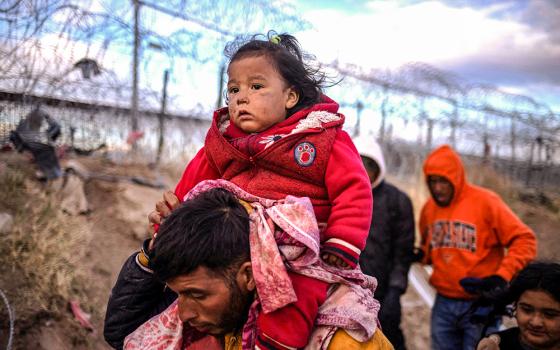Though the Vatican has had a Pontifical Council for Health Care Workers for twenty-five years now, and while Christian literature is rich with meditations on the spirituality of suffering, one could nevertheless make the argument that the most powerful recent statement Catholicism has made about the dignity of the ill person was the way John Paul II allowed his own twilight to play out in full public view.
Throughout the latter years of his papacy, John Paul was aware of the voices making the rounds that it was undignified for the pope to continue to travel and appear in public in such a weakened state, badly hobbled by age and by Parkinson's disease. To be fair, that reaction was partly rooted in natural pity for an elderly man struggling just to stay on his feet, or to utter a few slurred words. But John Paul took the opposite view, seeing his determination to keep going as an important counter-witness in a society that often worships youth and physical beauty.
I recall in 2000 asking Jean Vanier, the founder of the L’Arche community that works with people struggling with mental and physical disabilities, if John Paul had become a more powerful symbol because he was himself “disabled.
Vanier’s response was simple and unequivocal: “The pope has never been more beautiful than he is right now,” he said.
That aspect of John Paul’s legacy will be one focus of a three-day event sponsored by the Pontifical Council for Health Care Workers Feb. 9-11, marking the office’s 25th anniversary as well as the 18th “World Day of the Sick.”
The official theme of the event is, “The church in the service of love for the suffering,” and its focal point is John Paul’s apostolic letter Salvifici Doloris (“On the Christian meaning of human suffering”) issued in 1984.
On Tuesday afternoon, Carl Anderson, the Supreme Knight of the Knights of Columbus, will speak on “The meaning of the suffering of John Paul II for the church and the world.” There’s also going to be a display of roughly 30 panels dedicated to John Paul II and suffering, with the idea apparently being that this could become a traveling exhibition.
Among other items of note, Bishop William Murphy of Rockville Center, who has been leading the U.S. bishops’ campaign on health care reform, is scheduled to talk about the pastoral fruits of the World Day of the Sick.
During a Vatican news conference this morning to present the event, Bishop Jacques Perrier of Tarbes and Lourdes in France was also on hand to explain that relics of St. Bernadette of Lourdes will be brought to Rome for next week’s gathering. The plan is for the relics to be welcomed in Rome on Tuesday at the Basilica of St. Mary Major (the service will be presided over by the basilica’s archpriest, Cardinal Bernard Law), and on Thursday the relics will be carried in a procession down the Via della Conciliazione into St. Peter’s Basilica.
Perrier said there's a special connection between John Paul's suffering and Lourdes, known for its springs which devotees believe to have healing powers. The pope visited the sanctuary twice: the first trip came two years after the 1981 assassination attempt, and the second in August 2004, in what would be the last trip outside Italy of his papacy. On that occasion, John Paul famously declared himself "a sick man among the sick."
The program for the event can be found here: http://www.healthpastoral.org/text.php?cid=486&sec=3&docid=150&lang=en




